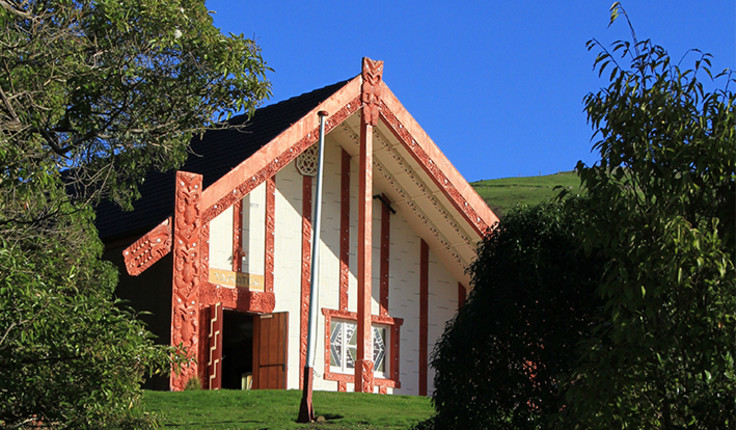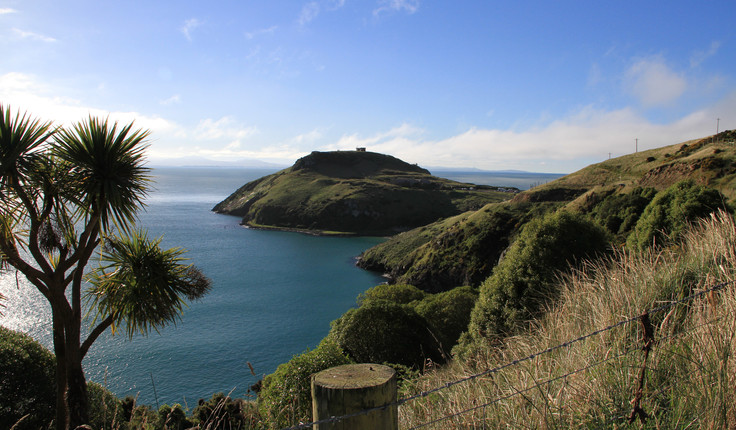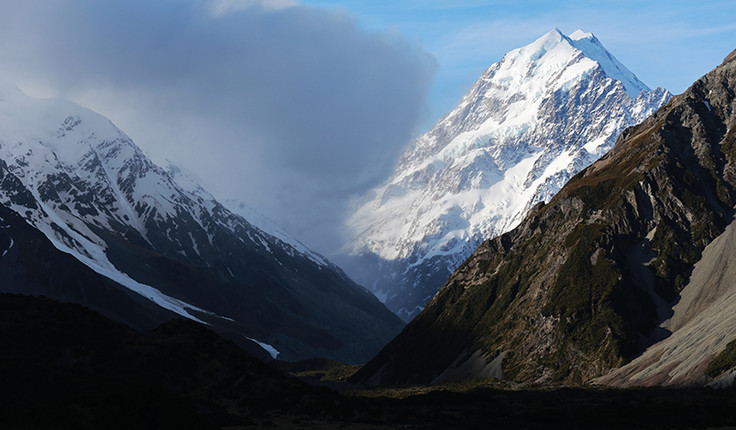News
Tōku Whenua, Tōku Reo – My Landscape, My Voice
Posted 28 02 2019
in News

Te Tau-a-Nuku article
Te Tau-a-Nuku member Alayna Renata (Kāi Tahu, Ngāti Tuwharetoa) recently completed her PhD in Australia, and discusses her research and the PhD process in the following article.
Tōku Whenua, Tōku Reo – My Landscape, My Voice
The Kāi Tahu Landscape - With a rapidly growing global population, development of open space is intensifying, placing increasing pressure on landscapes and those communities that hold meaning to these places. Conscious of these pressures, many legislative frameworks have been established to protect landscapes from inappropriate development and use. That is, development that threatens landscapes of significance, both naturally and culturally, being those in need of protection for generations still to come.
Some ambiguity however exists in the approaches applied to determining which landscapes are worthy of protection. Aotearoa New Zealand, and in particular the takiwa[1]of Kāi Tahu was the focus of this research as it illustrates a society made up of an indigenous culture, which continues to exist in a now multicultural nation primarily governed using European Planning frameworks and the promise of goodwill in the Treaty of Waitangi. The research explored the associations that people have to landscape features, while gaining knowledge on how they prefer this knowledge to be translated across cultural boundaries. Beyond this it explored the trends of associations and preferences against current policy documents, the requirements for responding to legislation and the opportunities for cross cultural collaboration in the policy space. It furthermore explored the contemporary pursuit for evidence, authenticity and legitimacy that plagues today’s society.
Data was collected from face to face interviews, online surveys and through a case of policy development that addresses the research problem. European and indigenous research methodologies were used in this study to respond to the research objectives and questions. The research initially focuses on exploring what is seen as an ‘important landscape’ to Kāi Tahu and policy planning participants, while also understanding how Kāi Tahu prefer to share this knowledge. This developed an understanding of a socio-demographic set of community preferences. These findings were then cross examined against the contents of existing policy documents to analyse the extent to which current legislative frameworks respond to community values. The work addresses the notion that some behaviours deemed accepted and familiar in one cultural paradigm may not be so for others.
This research has been undertaken across multiple takiwā and council jurisdictions, and as such, the collective regularities have been analysed across Te Wai Pounamu[2]. The outcome of the research gives voice to indigenous communities, who often see landscapes from different perspectives to the perhaps more universal western ideals and who await true enablement derived from the fulfilment of the promise of goodwill.
[Editorial note - we hope to persuade Dr Renata to share more of her findings in later issues].
The PhD Journey - Some of you who are reading this will have thought about undertaking a PhD at some point of your career, others will already have one, and some of you might think it sounds like your worst nightmare. Having recently arisen from depths of the PhD journey and graduated in late 2018, I can say with confidence that it can be one of the richest experiences of your career and personal life IF you are writing about a topic that you are passionate about or is inherently connected to who you are. I was lucky enough to have a supervisory team who placed significant emphasis on this in the early stages of my PhD exploration, and looking back now I think my journey would have been very different if I had not taken their advice, so a huge thank you to Dr Gill Lawson, Dr Diane Menzies and Dr Debra Cushing for that guidance.
So, you sit there, and you ask yourself “what is a topic that is inherently connected to who I am?” After peeling back a few layers of ‘how do I save the world’ moments (which supervisors are hilariously quick to reign in), it became very obvious fairly quickly. I am not a landscape architect, but rather a Māori landscape architect – that is, I see the profession of landscape architecture through a lens that explores all aspects of social, environmental, cultural, ecological, economic, an educational design as being integrally linked. As one would expect, particularly when you are working in a tight 6-year window of delivery, as soon as the penny dropped the PhD journey began.
A major goal for me with my PhD was the opportunity to hear the voice of Kāi Tahu people and their association with landscape, as well as the voice of policy makers and their position on landscape protection. Similarly, I wanted to explore preferences around sharing landscape association knowledge, be it from the perspectives of iwi members or the requirements of planning processes. My research involved meeting with many Kāi Tahu individuals, policy makers and planners throughout Te Wai Pounamu. A key activity in this data collection was the generation of a participatory exercise, which I titled ‘Tōku Whenua, Tōku Reo – My Landscape, My Voice’. It was a card activity that also had an online platform that participants undertook to give a hierarchy of preference to their answers to my questions. While this was only one aspect of the data collection, it provided some invaluable insight into the preferences of participants.
Given I could talk about this topic for another 80,000 words, I’ll leave it there and say that the PhD experience is one that can be an incredibly rich experience. For all it’s highs and lows, late nights, early mornings and somewhat of an emotional roller-coaster, you connect with inspirational people, amazing minds and will discover a passion and resilience you didn’t know existed. So, if you are tossing a coin on whether to do a PhD or not, my advice would be to go all in.
Ngā mihi,
Dr Alayna Renata


[1]Takiwa - traditional lands
[2]Te Wai Pounamu - the South Island
Te Tau-a-Nuku is a collective of Māori Landscape Architects and a member of Nga Aho.
Nga kupu whakamutunga na te Kaituhi o Te Tau-a-Nuku. He mihi miharo ki a ta tatau mema a Alayna mo tou Takutatanga. Tana PhD he kai o nga Rangatira! Tou mahi - he mahi hohonu me he mahi hiranga; he koha taua ki a te ao Māori, me ki nga horanuku o Aotearoa. No reira kei te mihi, kei te mihi, kei te mihi ki a koe mo tou koha kia matou.
Share
19 Dec
Christmas break 2025

see you from 12 January
As we wrap up another big year, we’re taking a moment to pause, breathe, and enjoy a well-earned break. Meri …
18 Dec
President’s update

December 2025
Earlier this month I attended the Ngā Aho Māori Design Professionals Wānanga-ā-Tau at Te Aranga Marae in Flaxmere. Tuia Pito …
18 Dec
Awards 2026 update

An update as we warm up for the 2026 Awards kaupapa. Submissions will open in March and will run for …
Events calendar
Full 2026 calendar